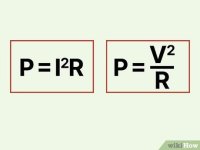The methodology is from http://www.geofex.com/Article_Folders/xformer_des/xformer.htm
Winding a OT for a Vox AC30.
Power = 30W
Primary Impedance : 3700 Ohm / 4kOhm (depending on the source you use. I went with 3700)
Secondary Impedances : 4/8/16 Ohm
Lowest Frequency= 70Hz
Highest Frequency= 12Khz
Bobbin Area = 3.75 square inches
Using equation Primary Turns = (Vrms x 108)/(KfbA)
where
V= voltage swing in RMS
K= 4 dependent on stacking factor
F= lowest frequency
b = maximum flux density (went with 14KG)
A = Area of stacked tongues (bobbin area)
To find V in this source it shows the AC30 has a voltage swing of 295V peak to peak although the wording is a bit unclear. Converting to RMS we get ~ 105Vrms.
Applying in the above equation I get 714.2857 turns .
HOWEVER in this source at the very end it states that Vrms is 1.1xB+ , which in this case is 345. giving a value of 380Vrms for the input. This is quite a dilemma. I'm unsure about which value to use as comparatively my value for turns is very low compared to a document I found about winding a AC30 transformer , albeit their core was smaller. Please help me get over the last piece of this puzzle ! Thank you all so much.
Winding a OT for a Vox AC30.
Power = 30W
Primary Impedance : 3700 Ohm / 4kOhm (depending on the source you use. I went with 3700)
Secondary Impedances : 4/8/16 Ohm
Lowest Frequency= 70Hz
Highest Frequency= 12Khz
Bobbin Area = 3.75 square inches
Using equation Primary Turns = (Vrms x 108)/(KfbA)
where
V= voltage swing in RMS
K= 4 dependent on stacking factor
F= lowest frequency
b = maximum flux density (went with 14KG)
A = Area of stacked tongues (bobbin area)
To find V in this source it shows the AC30 has a voltage swing of 295V peak to peak although the wording is a bit unclear. Converting to RMS we get ~ 105Vrms.
Applying in the above equation I get 714.2857 turns .
HOWEVER in this source at the very end it states that Vrms is 1.1xB+ , which in this case is 345. giving a value of 380Vrms for the input. This is quite a dilemma. I'm unsure about which value to use as comparatively my value for turns is very low compared to a document I found about winding a AC30 transformer , albeit their core was smaller. Please help me get over the last piece of this puzzle ! Thank you all so much.
Ha! That looks almost too simple but I'm sure you're right and I'm overthinking all this. Also , if this is THE Merlin Blencowe , I am a HUGE fan. I carry around your book like a Bible to uni everyday. Thank you so much for the response.
It is essential to understand that an AC30 works in class B at full power.To find V in this source it shows the AC30 has a voltage swing of 295V peak to peak although the wording is a bit unclear. Converting to RMS we get ~ 105Vrms.
So the voltage swing of 295V from the ampbooks link is not peak-to-peak but peak voltage per half-primary.
Means that the RMS voltage per half-primary is 0.707 *295V = 208.6Vrms.
Due to transformer principle the voltage across the full primary then is twice that value or 417Vrms.
In reality the full power primary RMS voltage will be lower by maybe 30V, because B+ sags and cathode voltage increases.
